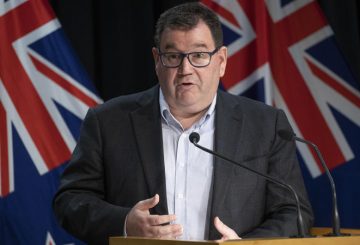Covid-19のモデラー(数理モデルを駆使して感染症対策の研究や支援を行う人々のこと)は、水曜日までに1日200人のコロナウイルス感染者が、週明けには1日400人の感染者が出ると予測しています。
Te Pūnaha MatatiniのモデラーであるDion O’Neale博士は、オミクロンが混在しているため、今週はこれまでの比較的低い感染者数からシフトするだろう、と述べました。
「オミクロンが流行した世界中のほとんどの地域では、2倍になる時間は3日程度です。ニュージーランドも似たようなものだと考えています。
「つまり、週の初めには1日100件程度、週の半ばには1日200件程度、そして週の終わりには倍増して400件程度になるということです。
「もしかしたら、状況が悪くなるかもしれません。木曜日か金曜日に来るかもしれないし、うまくいって日曜日までにその水準に達するかもしれない。倍増するまでに3日前後かかるという、大まかなパターンです。
O’Neale氏はMorning Report(朝のニュース番組)に、現在の感染者がすべてオミクロン型と確認されているわけではないものの、モデラーはまもなくそれが大多数になると予想しており、現在その挙動をもとに計算を行なっていると語りました。
「オミクロンの感染者はデルタや他の亜種より早く成長するので、他の亜種を上回り、取って代わると予想されます…他に分からない限り、出てきた感染者をオミクロンと仮定するのが最も安全です。」
博士は、オミクロンの潜伏期間(人が感染してから症状が現れ、自ら感染するまでの期間)が非常に早いと警告しています。
自分が病気であることに気づき、検査を受け、その結果が報告されたら、感染してから4〜5日目ということもあります。
「我々が目にしている現時点での感染者数は、少し前に発生した感染であることを忘れてはなりません。」
これは、週末や祝日にCovid-19の検査を受ける人が比較的少ないというパターンが、この数字に偏りをもたらすことも意味しています。「このことは、短期的な感染者数の伸びに影響を与えるでしょう。」とのことです。





























































